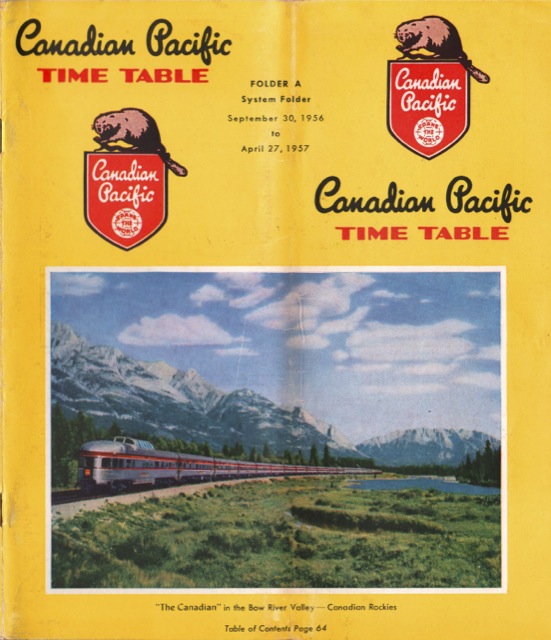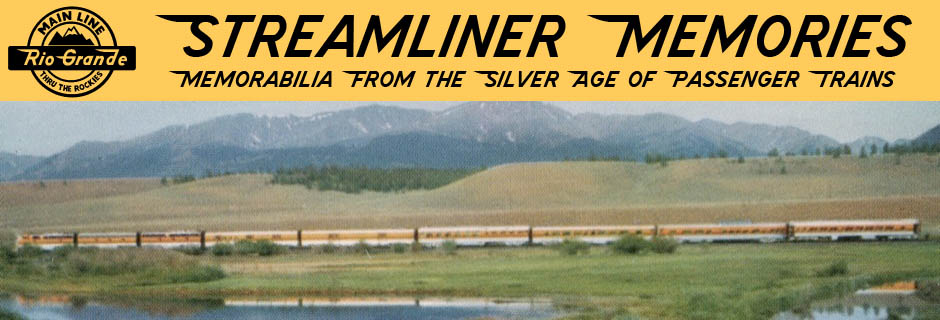This 68-page timetable is longer than the 36-page 1953 edition posted here a few days ago as that one just covered western and transcontinental trains. But the big change in this timetable is the the stainless steel Canadian on the cover; the Dominion was given the same new equipment, with enough dome-cafe and dome-observation cars that both the Montreal and Toronto sections of both trains would have two domes.
 Click image to download a 46.9-MB PDF of this timetable.
Click image to download a 46.9-MB PDF of this timetable.
Transcontinental service in 1957 consisted of the Canadian (using the coveted numbers 1 & 2, with the Toronto section numbered 11 & 12); the Dominion (still numbered 7 & 8, with the Toronto section numbered 3 & 4 merging in Sudbury); the Soo-Dominion (numbered 13 & 14 and consisting of coaches and a diner-lounge; no sleepers east of Moose Jaw), which merged with the Dominion at Moose Jaw; and the local, coach-only train, now numbered 5 & 6 with the Montreal section numbered 9 & 10.
The Canadian was scheduled to take 71 hours from Montreal to Vancouver (down from the Dominion‘s 87-1/2 hours in 1953) and 67-5/6 hours from Toronto to Vancouver (down from 83-1/2 hours). Eastbound, the Montreal section took just 70 hours and the Toronto section 66-1/2 (down from 82-3/4 and 79-1/2 in 1953).
Canadian Pacific could have operated its two virtually identical stainless steel, dome-equipped trains on similar schedules roughly twelve hours apart from one another, thus giving people a choice of departure and arrival times. Instead, the Dominion was scheduled to make many more stops (though fewer than the coach-only local), taking about 15 hours longer westbound and 13 hours longer eastbound than the Canadian. Both of the westbound trains go through the Rocky Mountains in daylight, but it’s probably dark by the time the eastbound Dominion reaches Kicking Horse Pass in the winter, while the Canadian remains in the light until after Banff.
The inside front cover announces the addition of the Empress of England to Canadian Pacific’s ocean liner fleet. CP would order only one more ocean liner, the Empress of Canada, before jet airplanes would make transatlantic ocean liners a thing of the past. Although CP had used its liners for cruises during off-seasons, it decided to get out of the passenger-carrying steamship business altogether in 1970, while instead building a small fleet of container ships.
